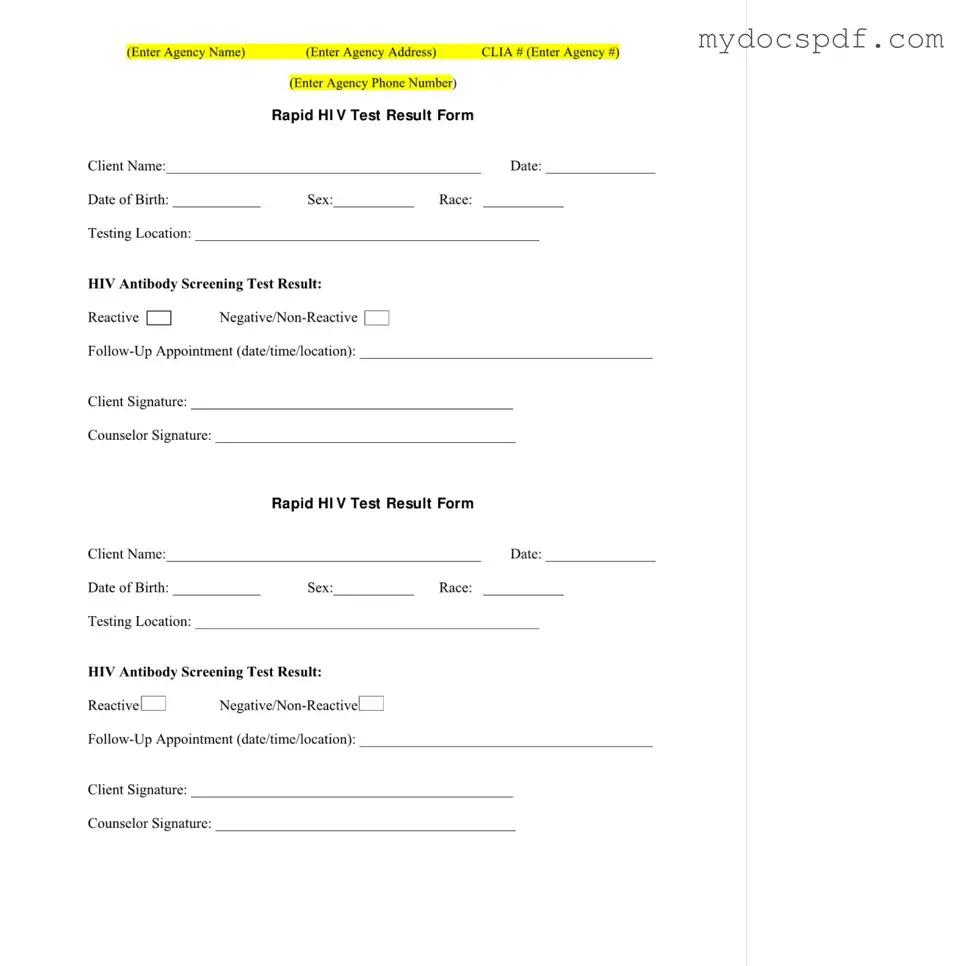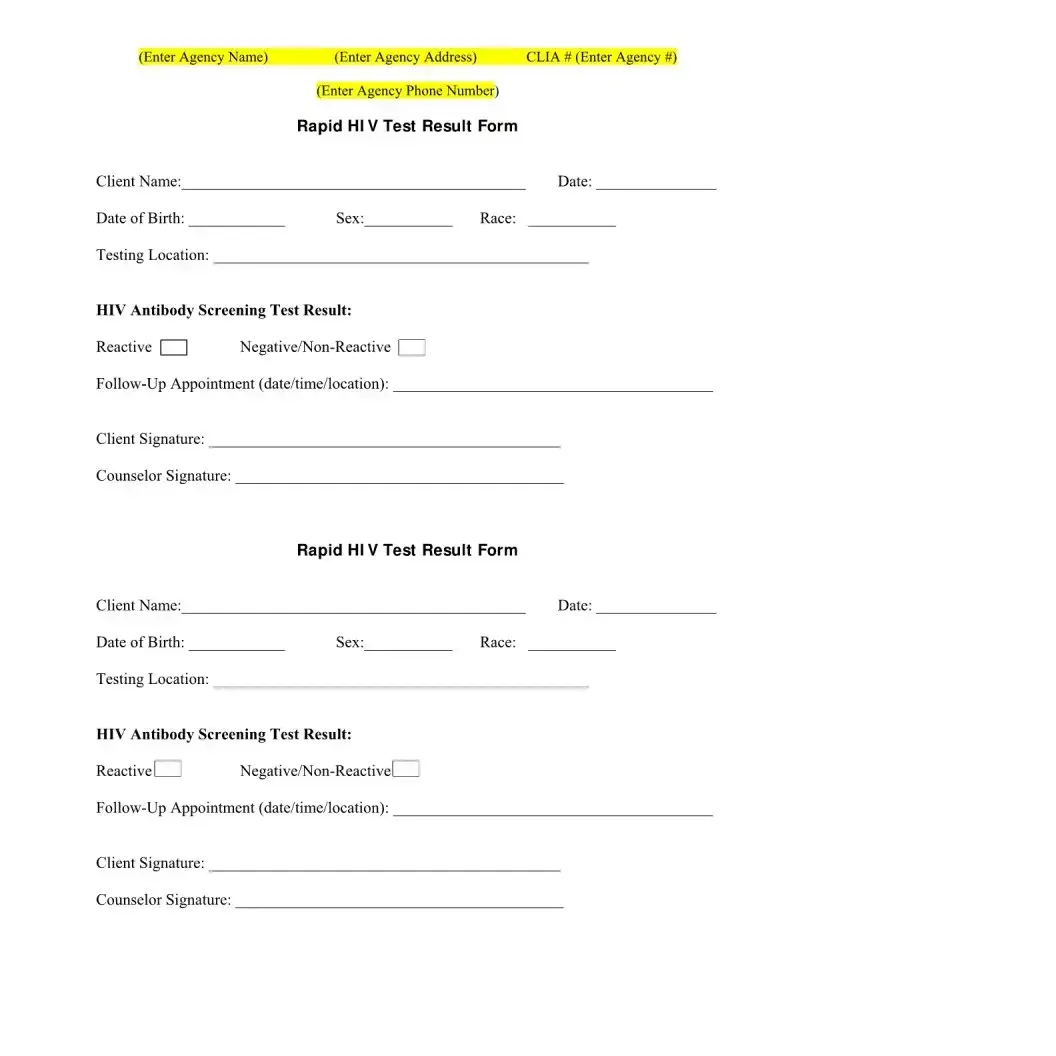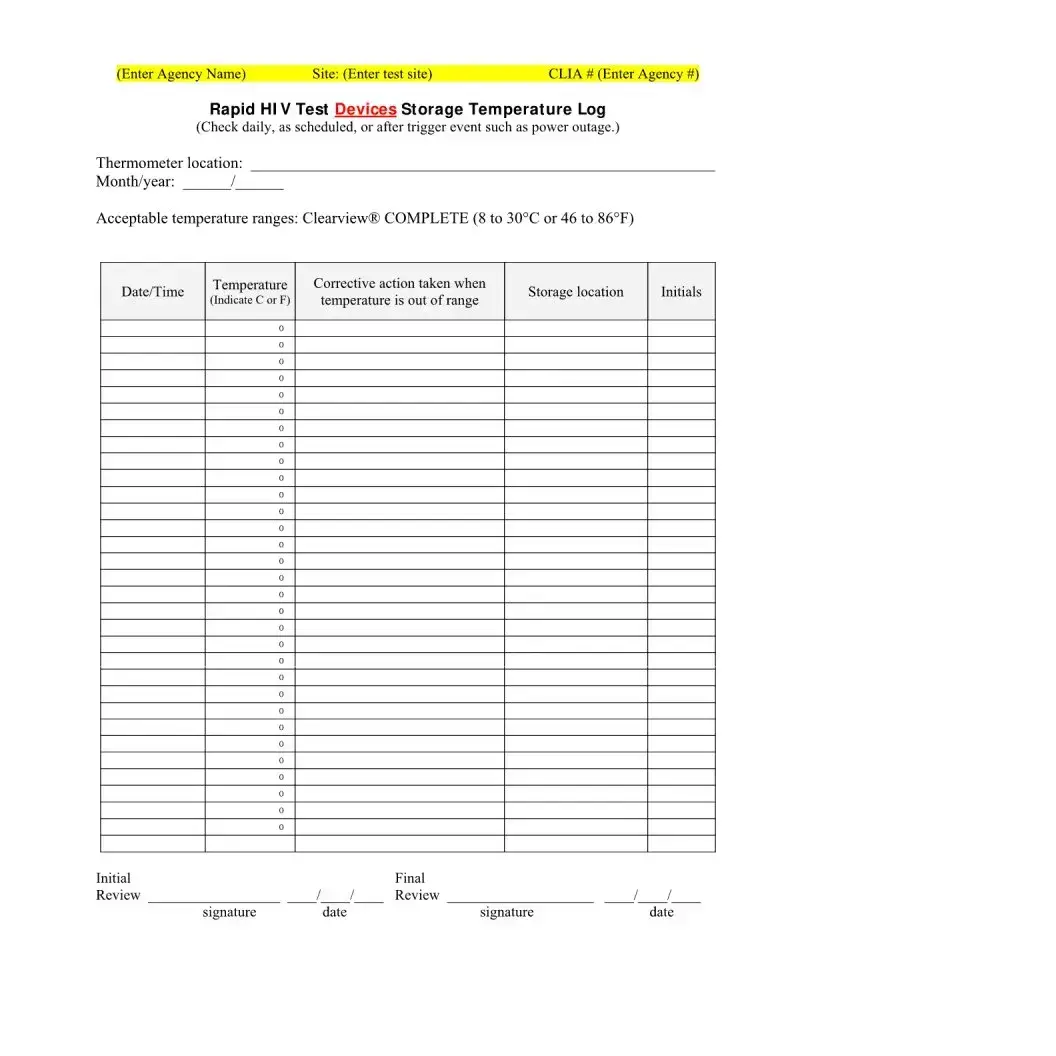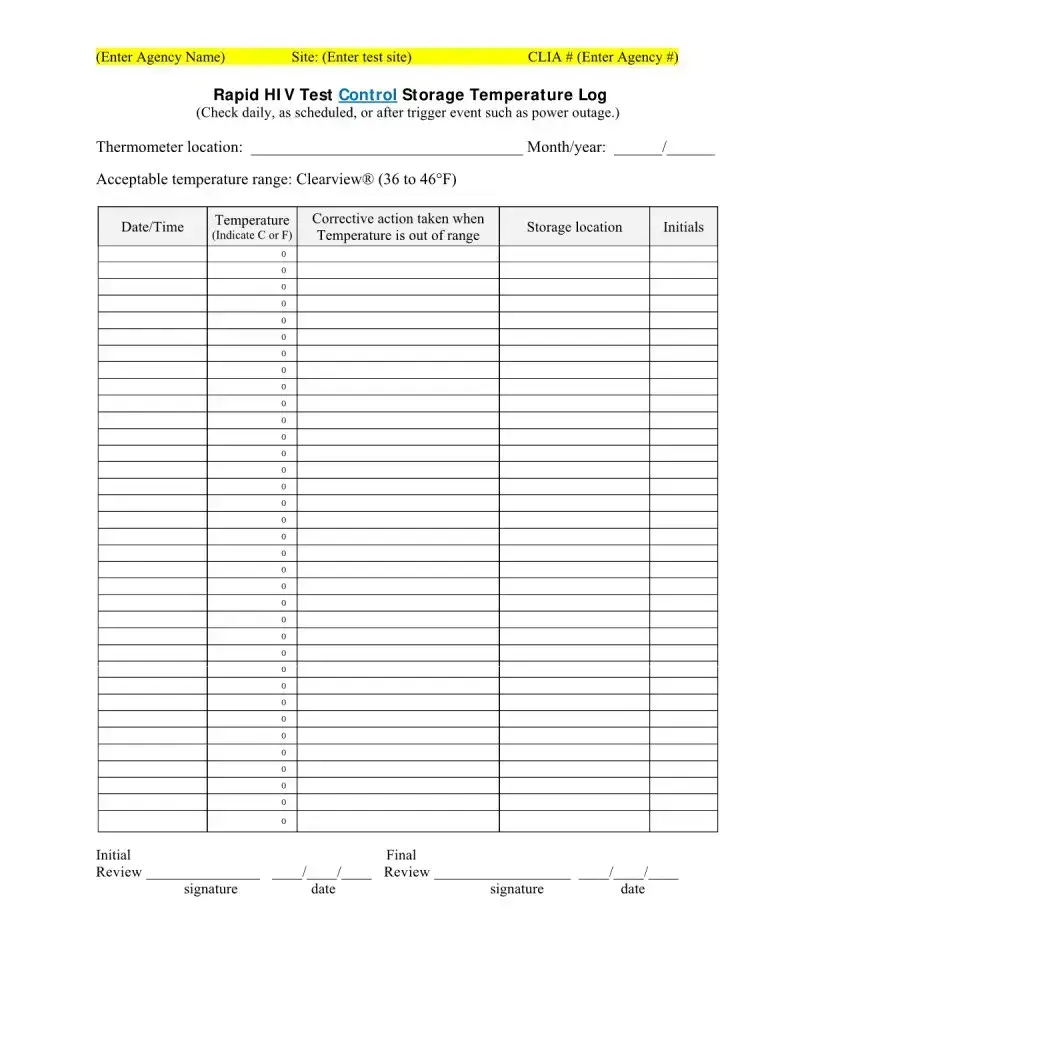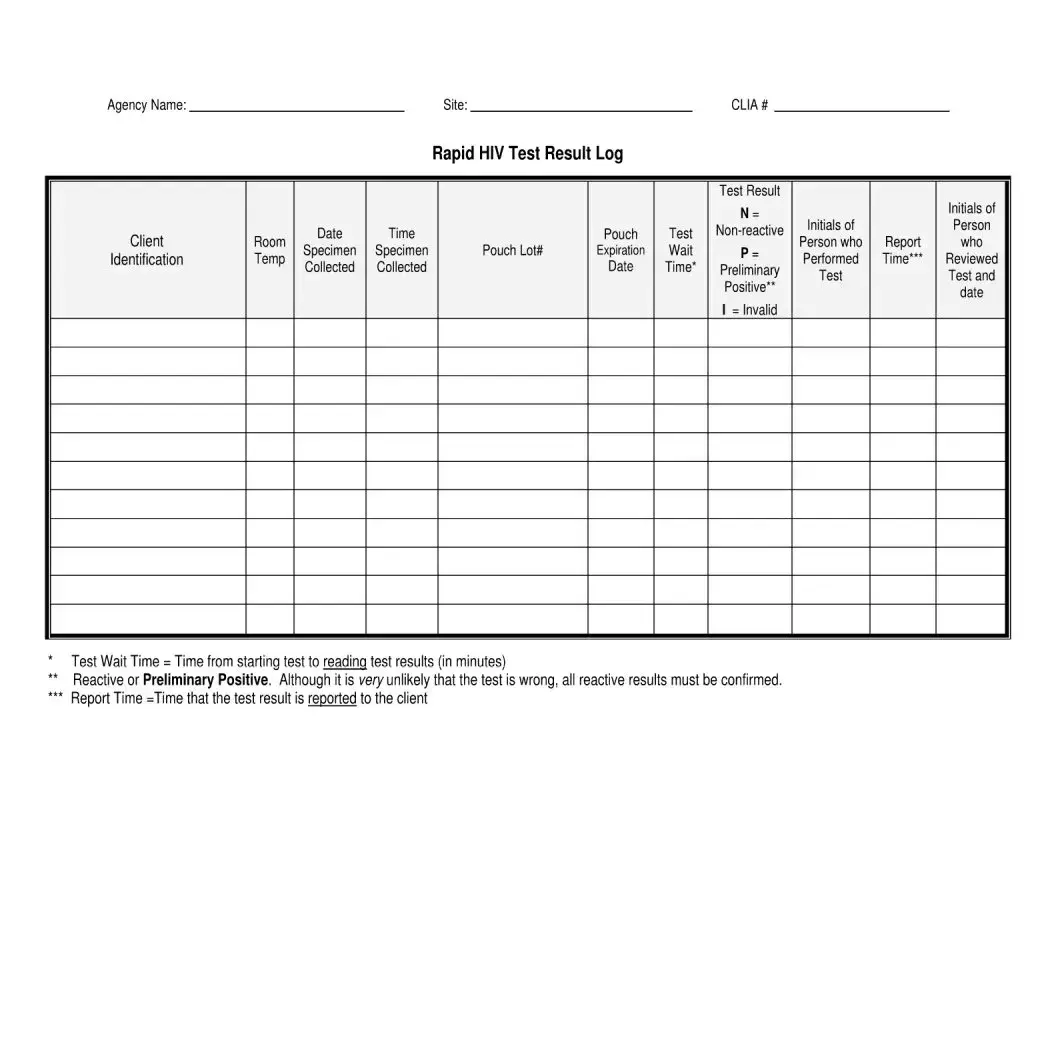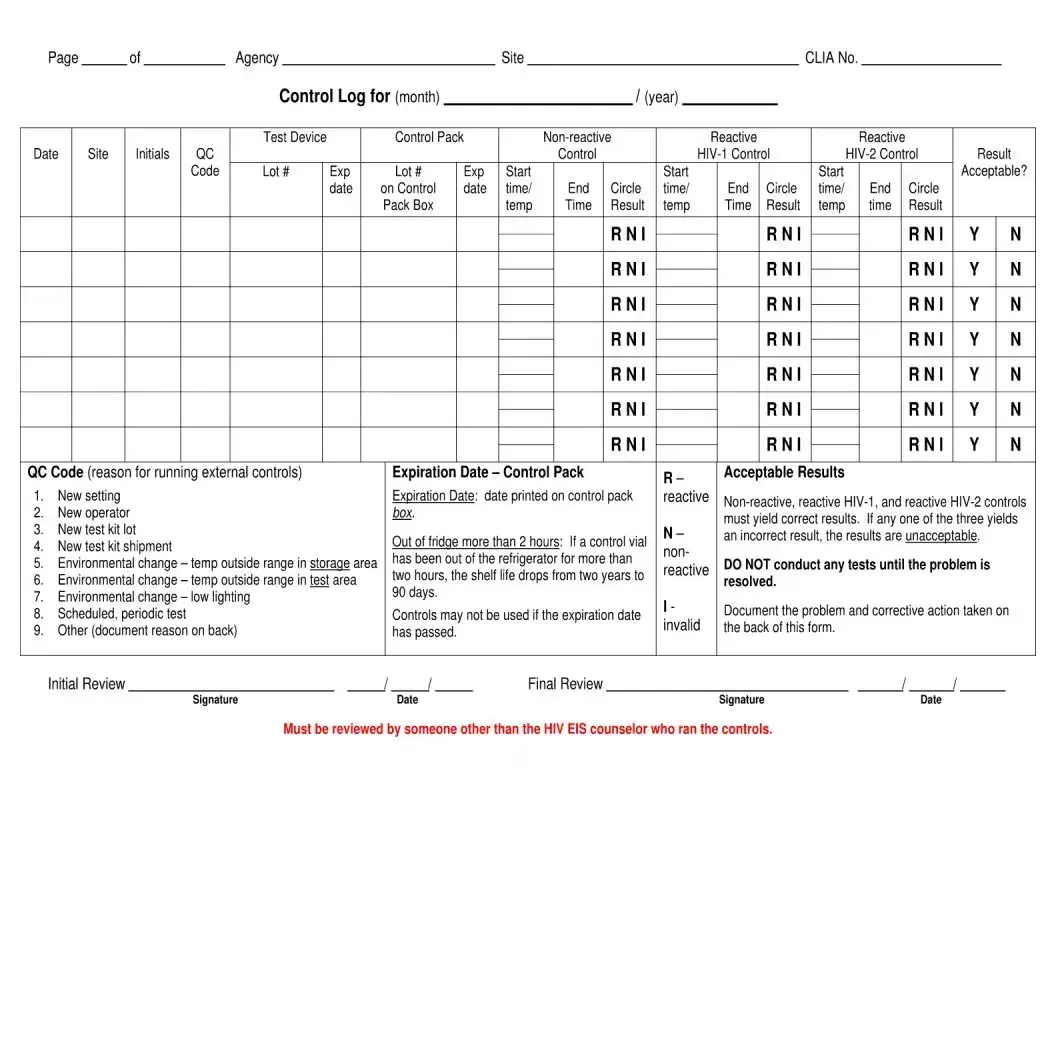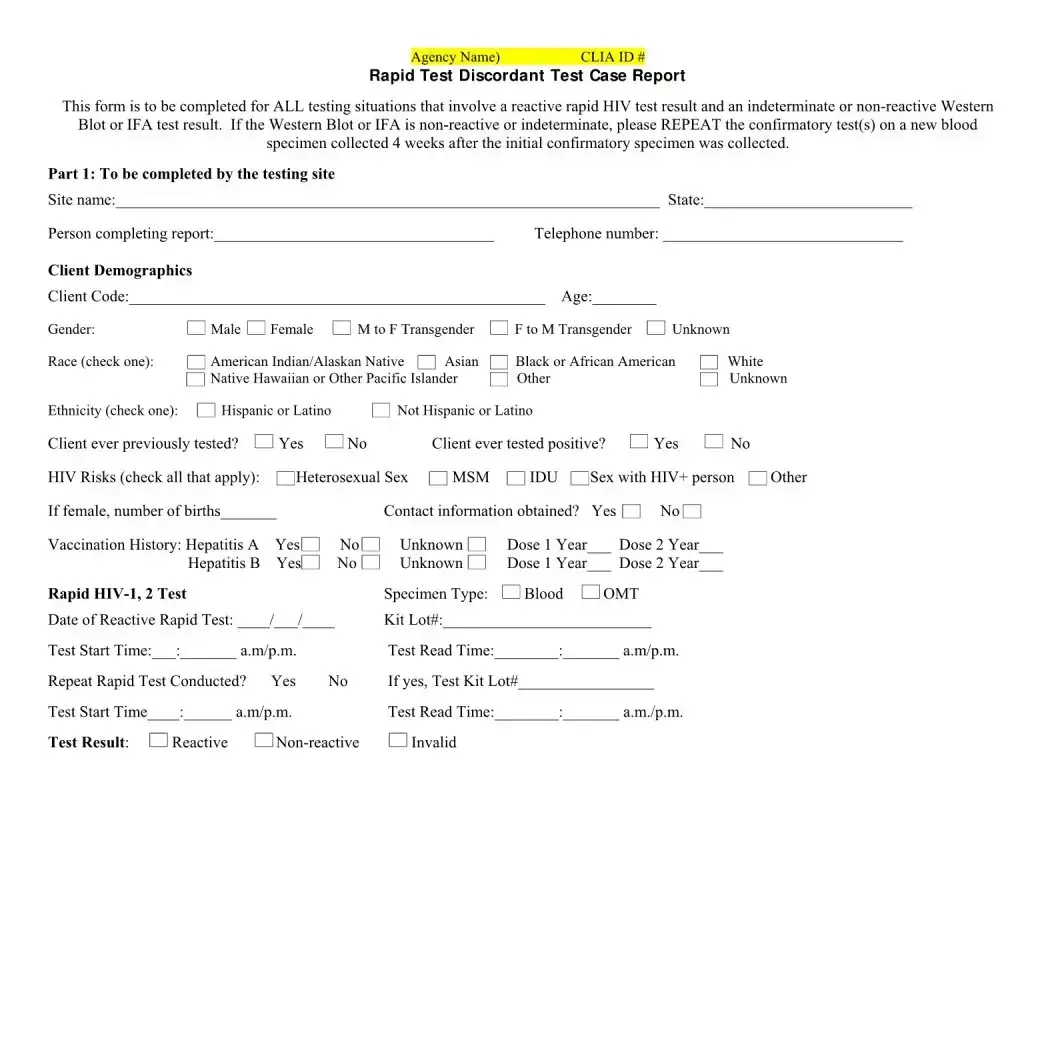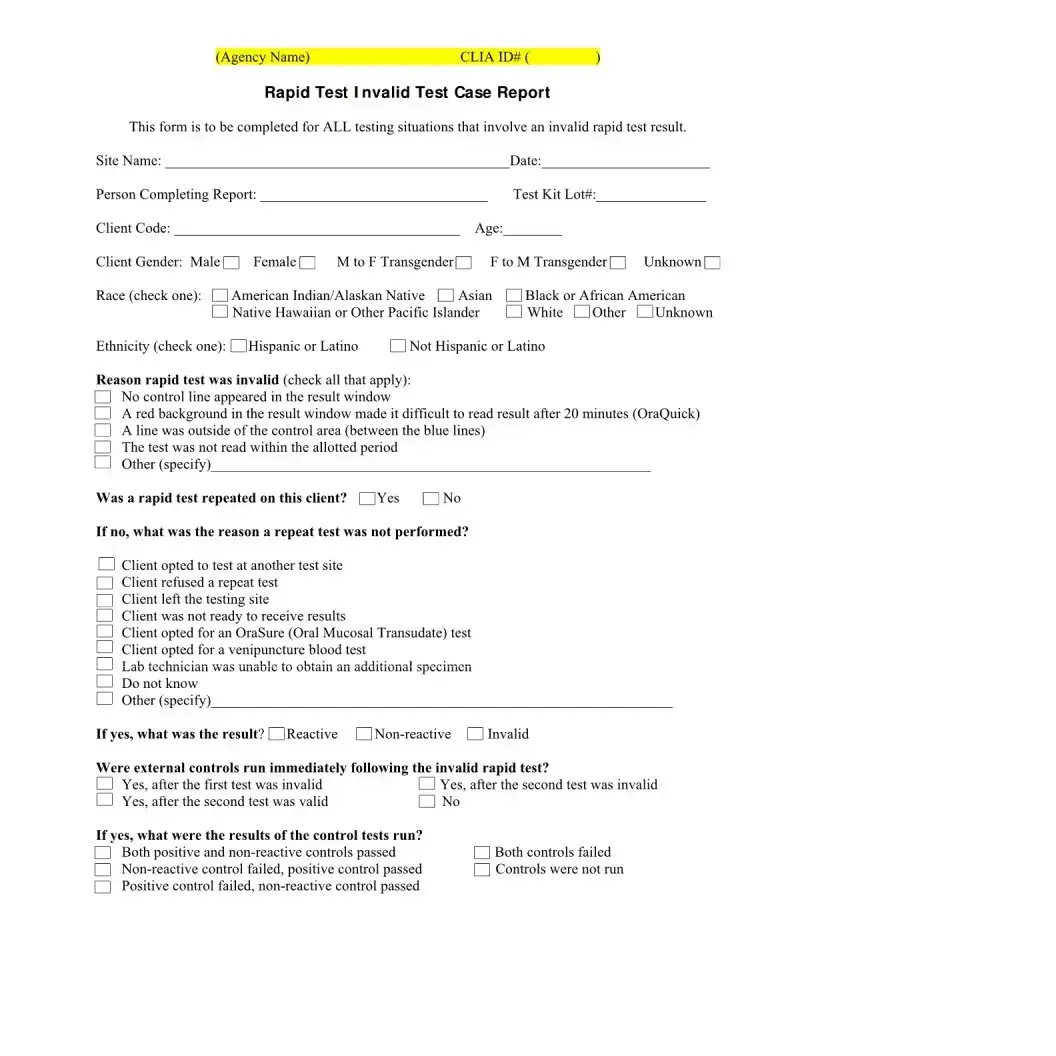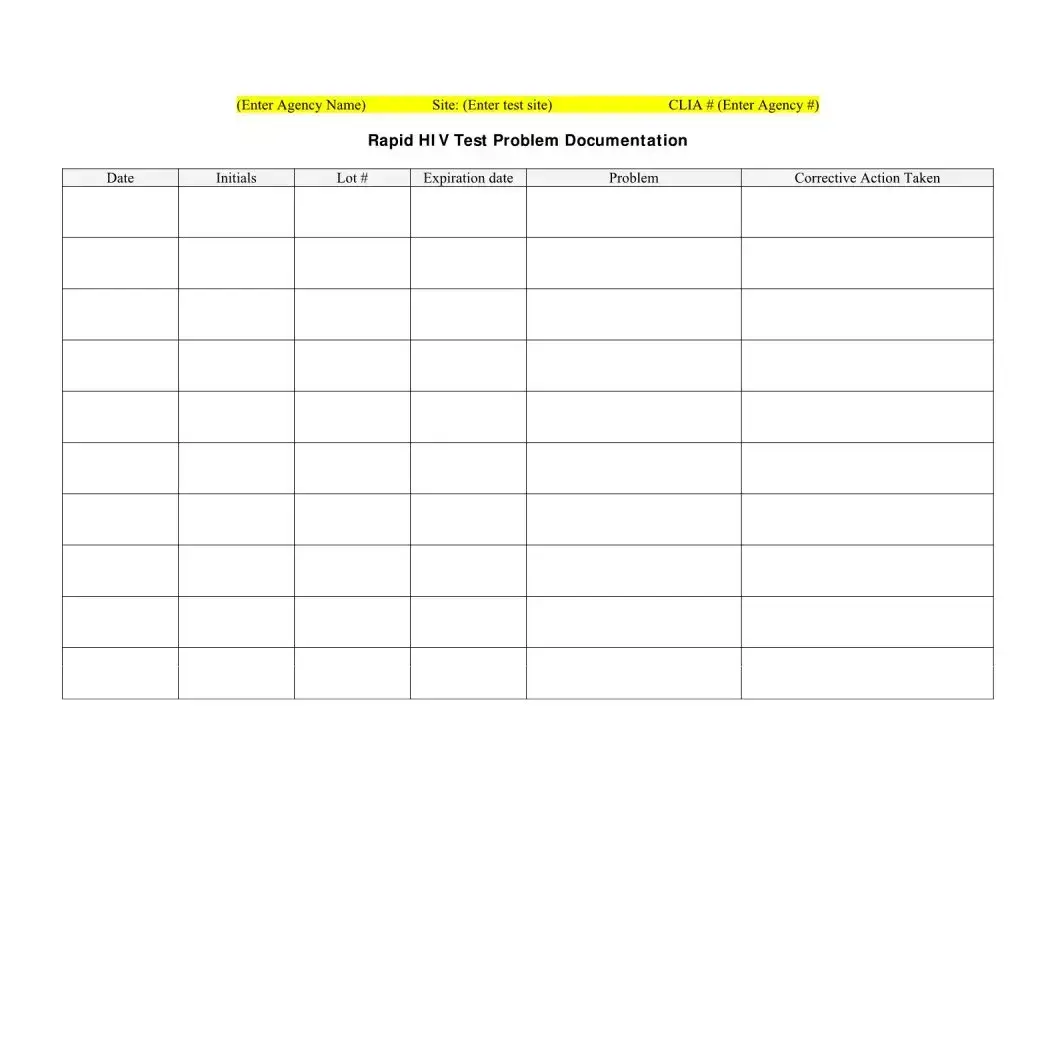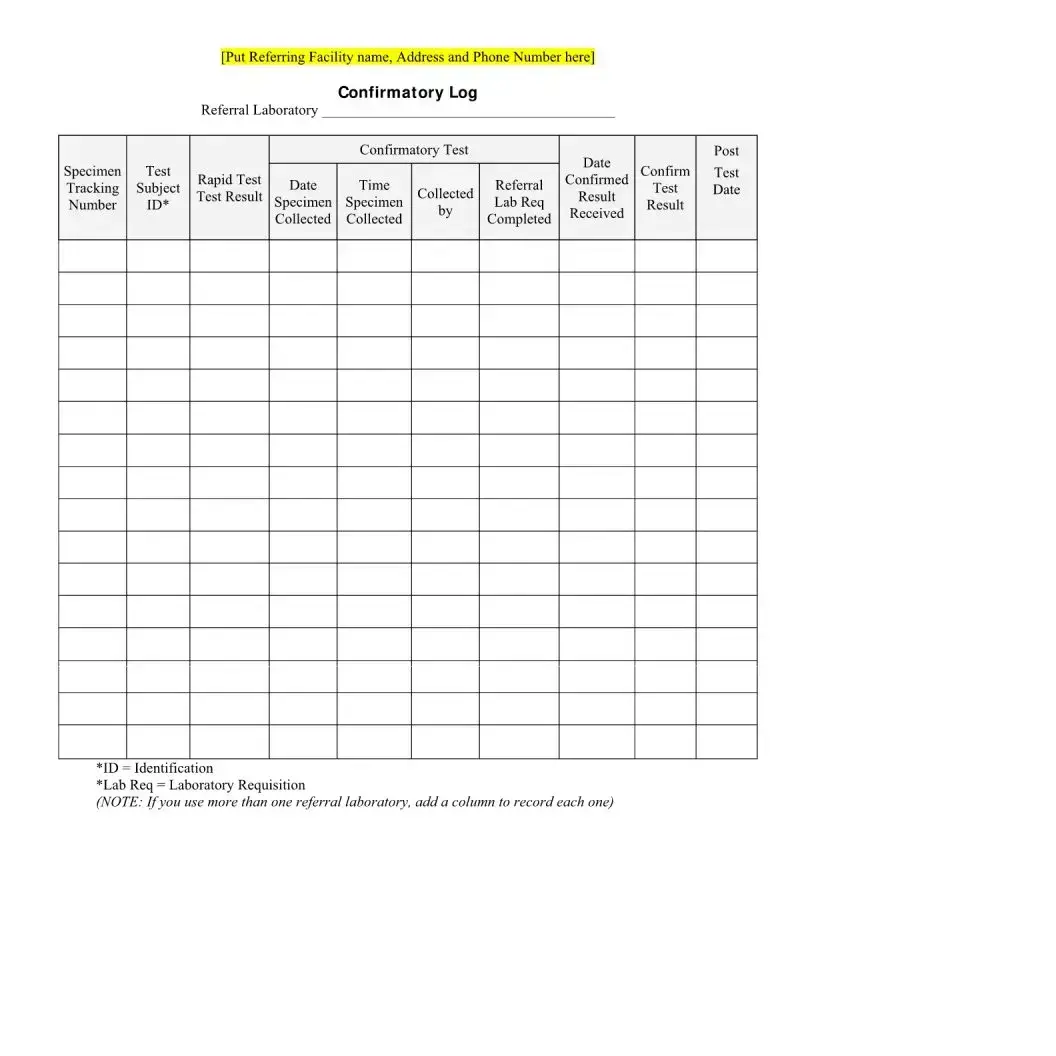The Negative HIV Test form is an essential document in the healthcare process, particularly for individuals undergoing HIV testing. This form serves multiple purposes, from documenting the client's personal information to recording the results of the HIV antibody screening test. Key elements of the form include the client's name, date of birth, race, and testing location, which help ensure accurate identification and tracking. The test results are clearly indicated as either reactive or negative/non-reactive, providing vital information for both the client and healthcare provider. Additionally, the form outlines the need for follow-up appointments, ensuring that clients receive the necessary support and guidance after testing. The form also includes sections for signatures from both the client and counselor, reinforcing accountability and consent. Furthermore, it encompasses storage temperature logs for both the rapid HIV test devices and controls, which are crucial for maintaining the integrity of the testing process. By carefully managing these details, the Negative HIV Test form plays a significant role in the broader context of public health and individual care.
